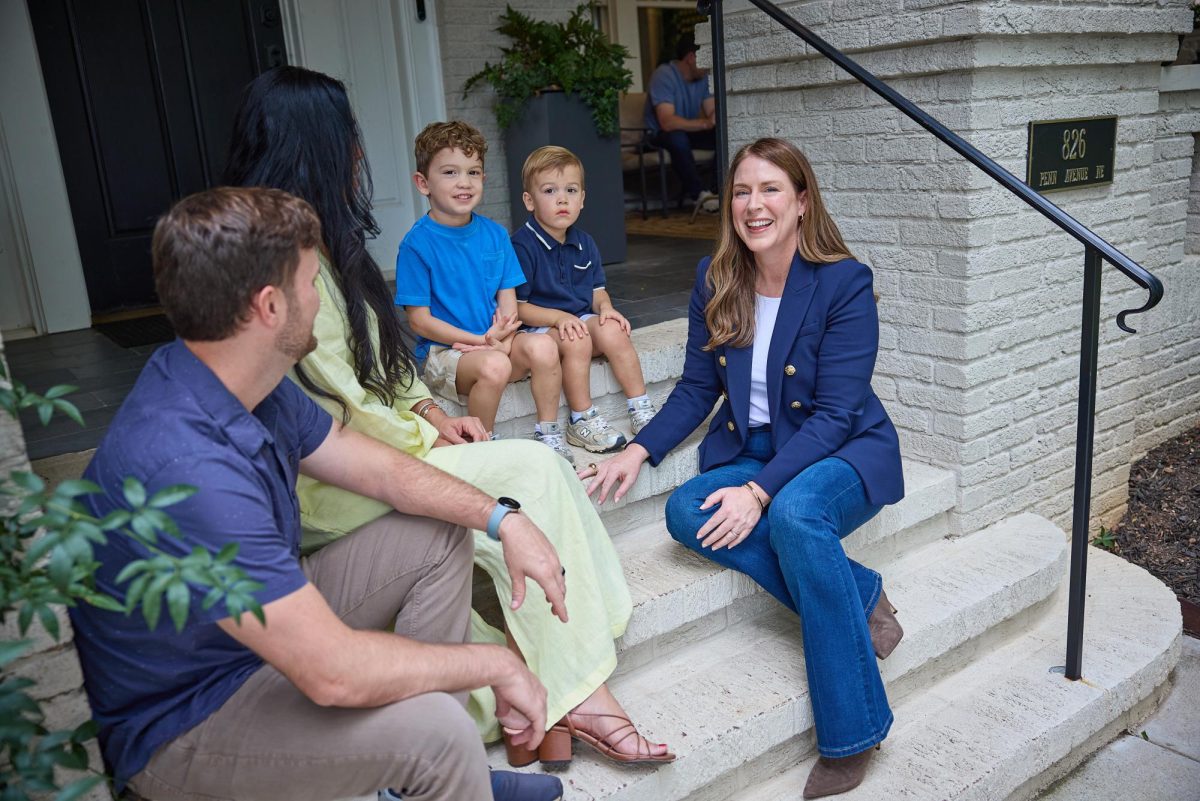Spanish classes create kites for Day of the Dead
Sophomore Kiera Ball flies the kite she decorated for Day of the Dead on the football field.
November 1, 2022
Taking inspiration from Guatemalan traditions, Spanish classes decorated and flew their own kites to commemorate Day of the Dead this year.
“We always do Mexico, but this year we wanted to do something different,” Spanish teacher Aquiles Loero said. “When I found out about the kites, it really caught my attention because I always loved kites.”
Loero came up with the idea to celebrate Day of the Dead the Guatemalan way this year. However, because of how many countries participate in the holiday, the decision wasn’t easy. When Loero found out about the use of kites, it reminded him of his own childhood memories.
“We have 21 countries, so exploring all that takes time,” Loero said. “This is something I grew up with— one of my aunts was an art teacher, so she gave me a book of kites to learn how to build them from scratch.”
The Spanish classes received funding from the PTSO to purchase kite-making kits. Accurately recreating Guatemalan kites is a time-consuming and intricate process.
“Making it from scratch would’ve been very difficult—- they spent over six months just building one kite, and of course they’re giant,” Loero said. “
Senior Nalani Adams, a student in Loero’s AP Spanish class, thinks that incorporating artistic activities into teaching can engage students and encourage them to learn more about Spanish culture.
“Everybody is going to learn in different ways, so exposing people to everything is going to help connect the dots of information better,” Adams said. “Putting your own creative spin on things and having a connection to what you’re learning about is good.”
Along with encouraging creative expression, an activity such as decorating kites can strengthen students’ skills working in a group. Spanish teacher Liliana Ortegon thinks teaching with an artistic approach is beneficial for her students.
“In this school, one of the strongest subjects is art and it’s always been like that,” Ortegon said. “The activity itself is a cross-curricular activity that involves way more than just the culture part of the Spanish country; it involves creativity, collaboration and teamwork.”
Ortegon thinks that finding new ways to teach students about Spanish culture will encourage them to take interest in it, preparing them for future interactions with people from Spanish-speaking countries.
“In the workplace, you are going to meet people of all different cultures, so it is good for [students] to see that there is not only our little bubble at school but also a variety of races and cultures around us,” Ortegon said. “Sometimes you don’t see that because you are surrounded by the same people your whole life.”
Spanish classes focus on not only teaching the language but also exposing students to the culture and traditions of Day of the Dead and other Spanish holidays. Spanish teacher Victoria Goya hopes her students understand that Spanish is tied to an abundance of culture.
“The idea is that they get engaged and know that when you’re learning a language, you’re also learning about the culture, the dances and the music,” Goya said. “The more we know about a different culture, the more we accept them and treat them with more respect.”
Adams thinks that it is important to introduce Day of the Dead to the United States because it encourages connection between families and respect for past generations.
“In the United States, we don’t usually celebrate people after they’re gone; maybe we do in our family, but not as a whole country,” Adams said. “We learn that it’s pretty nice to celebrate your family every once in a while even if they’re not here physically.”
With so many traditions to explore, Loero hopes that flying kites for Day of the Dead helped students create memories that will last a lifetime.“Everybody has their own celebrations and traditions,” Loero said. “This is definitely going to be a memorable experience for a bunch of kids, and that was the purpose of the celebration.”







